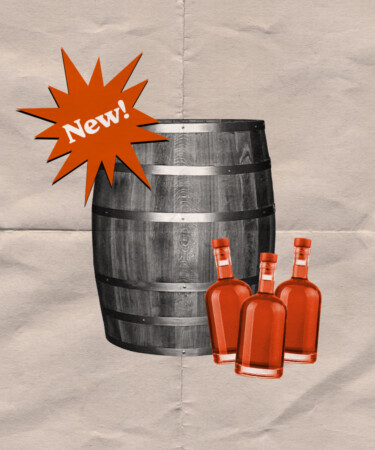Spirits are aged for a plethora of reasons, the primary one being that it can remove harsh flavors from unaged alcohol, instead replacing it with slightly sweeter, more palatable notes. When it comes to bourbon, the United States mandates by law that it must be aged in new, charred oak barrels for a minimum of two years. The rationale behind why is somewhat debated among bourbon producers and aficionados.
The most prominent reason why oak barrels in particular are required in bourbon’s aging process is that oak’s porous structure allows the spirit to flow in and out of its openings as temperatures change. This free movement allows the liquid to absorb compounds in the oak like hemicellulose, tannins, lignin, and the toasted wood flavor itself — all of which work to diffuse the spirit and add the essences of sugar, vanilla, and char that characterize bourbon’s flavor profile. Despite this, white oak — a closed-grain hardwood that’s most commonly used for bourbon casks — has a much firmer structure than other types of wood, such as pine or maple. As such, barrels made with American oak are less prone to decay and leaks. This strong structure allows for the interactions between the spirit and the wood to occur slowly, resulting in a more balanced bourbon.
But not just any oak cask will do. To be called bourbon, a whiskey must be aged in a new oak barrel. If the barrels are reused, not only do producers run the risk of inconsistency from batch to batch; they also risk diluting the crucial flavoring elements from the casks. When matured in new barrels, bourbon interacts with the highest concentrations of the elements that provide its luscious mouthfeel and distinct oak, vanilla, and caramel notes.
While there are a number of scientific reasons why exclusively oak barrels can be used to age bourbon, there are some theories suggesting that the practice may be done instead for tradition’s sake, or due to government lobbying in the 1930s.
The practice of aging whiskey in charred oak began sometime in the 1820s, and while it is unknown who was the first individual to do so, the process kick-started bourbon production in the United States as we know it. Around the same time, a grocer in Lexington, Ky., wrote to distiller John Corlis, explaining that he had heard charring the inside of a barrel could have positive impacts on the flavor of the resulting spirit. While the exact “positive impacts,” were not disclosed in the letter, it is now known that charring barrels and allowing them to dry before loading them with the spirit removes harsh tannins that are undesirable when drinking bourbon by opening up the wood. Further, charring barrels allows for lignin, the source of vanillin, to produce a higher level of flavor the longer the barrel is charred. Prohibition prevented the continuous creation of bourbon between 1920 and 1933, but once the 18th Amendment was repealed, charred oak aging was reinstated as a requirement for bourbon, perhaps purely for tradition’s sake.
Prior to Prohibition in the United States, bourbon distillers in the South packaged their spirits in oak casks to keep them contained during their long journeys north and east, during which the spirit would undergo its aging process. The oak acted as a watertight seal, preventing any liquid from leaking from the cask. Paired with the exorbitant costs of shipping at the time, it was financially challenging to return the barrels back to their original destinations. Thus, the practice of using a new barrel each time the spirit was aged and shipped began. Now, some historians believe the reason bourbon must be aged in new oak barrels is just to keep up with the status quo.
Others believe the reason “new” was placed in the provision that bourbon must be aged in oak barrels is thanks to lumber industry lobbyists. During the Great Depression, lumber was among the numerous industries performing poorly, and many officials in turn became heavily involved in congressional proceedings, lobbying for tax breaks and subsidies. With profits on a continuous decline and a dire need to create more jobs, these lobbyists may well have used their influence to promote a mandate that each batch of bourbon be aged in new barrels when the 1935 Alcohol Administration Act passed.
Whether it’s due to a certain chemical reaction, tradition, or lobbying, it’s undeniable that charred oak adds something distinctly special to each batch of bourbon.
